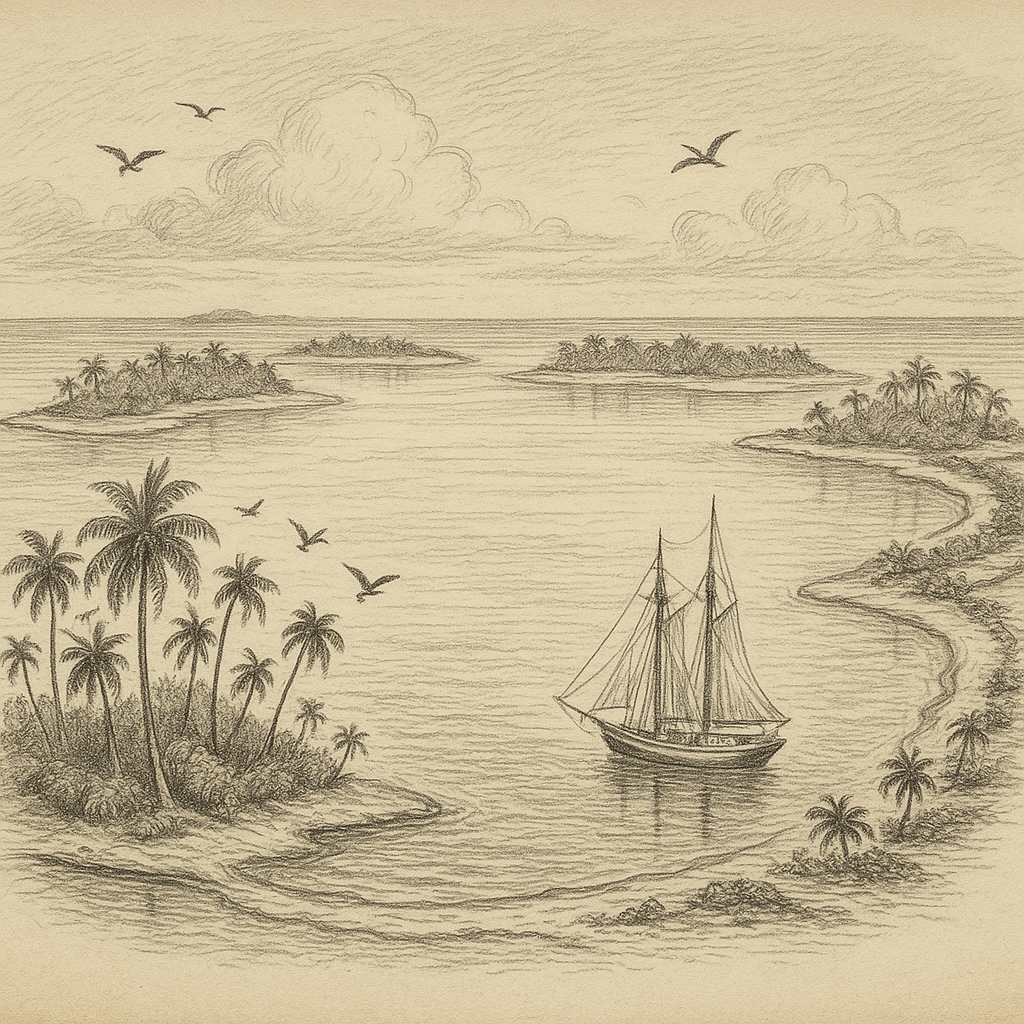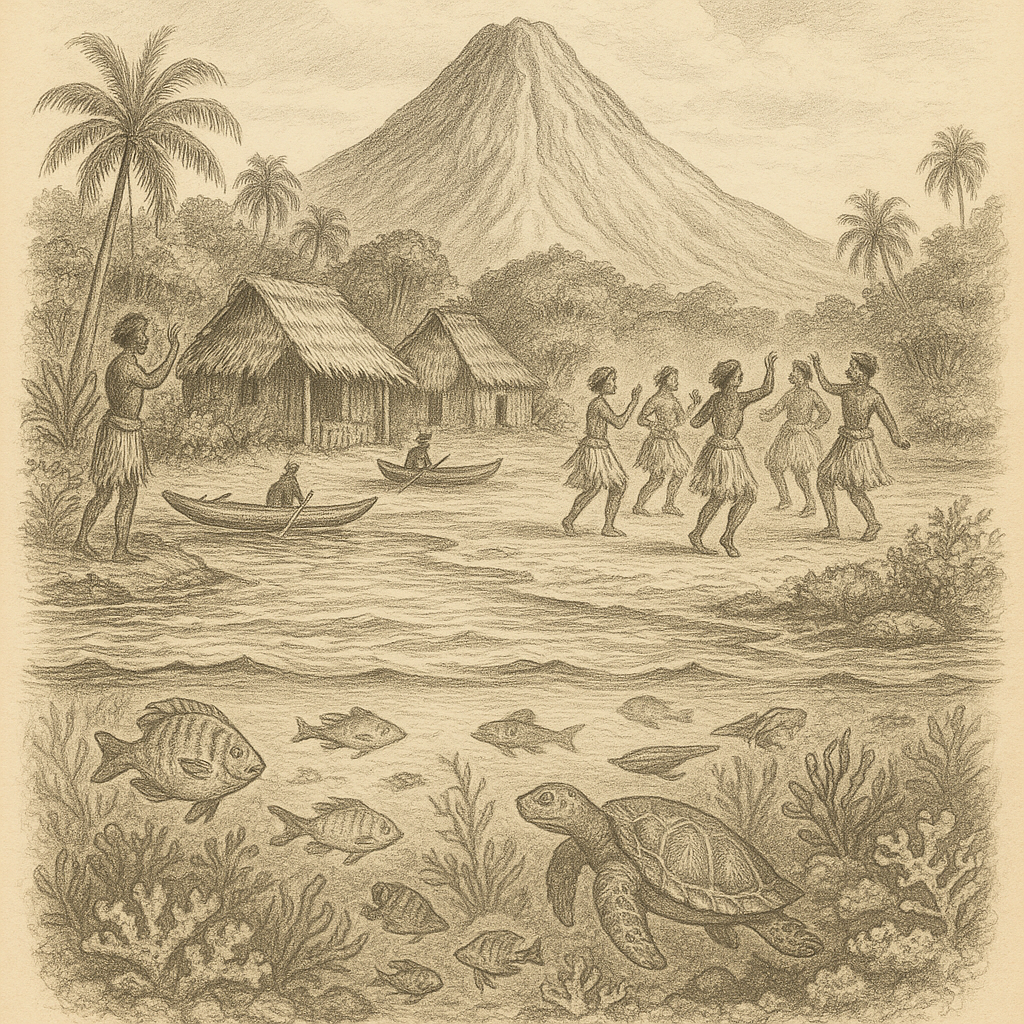Suwarrow Atoll: The Remote Gem of the South Pacific
Suwarrow Atoll, also known as Suvorov Atoll, is a remote and pristine coral atoll located in the central Pacific Ocean and part of the Cook Islands. Named after a Russian ship, the atoll is a secluded sanctuary far from the bustling world — a true hidden gem for nature lovers and adventurers alike. With its shallow lagoon, scattered motus (islets), and untouched scenery, Suwarrow captures the imagination of those longing for solitude amid natural beauty.
Location and Geographical Features
Suwarrow Atoll lies approximately 930 kilometers northwest of Rarotonga, the capital island of the Cook Islands. It is situated in the northern group of the archipelago and belongs to the broader region of Polynesia. The atoll is formed by a ring of small islets surrounding a central lagoon, which stretches about 80 square kilometers in size.
Unlike volcanic islands, Suwarrow is a classic atoll, constructed atop the remnants of a volcanic island that has long since eroded and sunk below the sea. Its surrounding coral reef serves as a barrier, protecting the lagoon from the deep Pacific waters. There are over 20 small motus, the largest being Anchorage Island, which serves as the main landing point for visitors.
History and Human Presence
Despite its remoteness, Suwarrow has an intriguing history. The atoll was discovered by Russian explorer Mikhail Lazarev in 1814 aboard the vessel Suvorov, after which it is named. European interest in the island sporadically increased during the 19th century due to its use as a stopover and for guano mining.
In the 20th century, Suwarrow briefly entered the literary scene through the New Zealander Tom Neale, who chose to live alone on the atoll for years across several intervals starting in 1952. His memoir, “An Island to Oneself,” details his life of solitude on Suwarrow and has become a cult favorite among those enchanted by the idea of castaway life.
Today, Suwarrow is uninhabited except for seasonal caretakers from the Cook Islands’ National Environment Service. These park rangers spend part of the year monitoring the atoll and facilitating visits from the few yachts that venture this far off the beaten path.
Ecology and Conservation
Suwarrow Atoll is now a designated National Park, protected under Cook Islands law due to its environmental significance. The isolation of the atoll has allowed a unique ecosystem to flourish, hosting a range of seabirds, coral species, and marine life.
The motus are vital breeding grounds for a variety of bird species, including frigatebirds, red-tailed tropicbirds, and several types of terns and boobies. The surrounding lagoon and reefs support diverse coral ecosystems, green sea turtles, reef sharks, and countless tropical fish.
Strict regulations are in place to preserve Suwarrow’s delicate environment. All visitors must obtain permits before setting foot on the island, and activities like anchoring, fishing, or introducing foreign substances are heavily restricted. Conservation efforts have included the removal of invasive species such as rats and the ongoing monitoring of native bird populations.
Intriguing Facts About Suwarrow Atoll
Suwarrow is not just a place of beauty and tranquility—it’s also filled with fascinating details that make it stand out. For instance, it has been dubbed the “Island of the Hermit” due to Tom Neale’s famous sojourns. Despite—or perhaps because of—its inaccessibility, the atoll has become a pilgrimage site for sailors inspired by Neale’s adventurous spirit.
The atoll is also an Important Bird Area (IBA) identified by BirdLife International, underscoring its vital role in global bird conservation. Some sailors and researchers have nicknamed Suwarrow “the Galápagos of the South Pacific” because of its biodiversity and minimally disturbed habitat.
Additionally, Suwarrow lacks any modern infrastructure – no electricity grids, roads, or buildings beyond the small accommodation huts used by rangers. Rainwater collection and solar panels provide limited utilities during the brief guarding season.
Myths and Legends of Suwarrow
As with many isolated Pacific locales, Suwarrow is not without its own set of legends and mysteries. Among the most persistent myths is that the atoll hides pirate treasure, possibly left behind by infamous rogues of the high seas. Although no major find has ever been confirmed, this tale continues to add an air of mystery to the island, drawing treasure hunters and curious travelers alike.
Another legend speaks of the ‘spirit lagoon,’ a part of the atoll where, according to local lore, whispers can be heard on moonlit nights. These whispers are thought to come from the spirits of ancient Polynesian navigators who once passed close to the island, guiding their canoes by the stars.
These stories, passed down among seafarers and islanders, contribute to Suwarrow’s enigmatic appeal, blending natural wonder with the allure of the supernatural.
Access and Visiting Information
Reaching Suwarrow Atoll is an adventure in itself. There are no regular flights or ferries; the only way to reach the atoll is by private yacht. The journey can take several days from the nearest inhabited island, depending on weather and sea conditions.
Visiting requires advance permission from the Cook Islands’ National Environment Service, and prospective visitors must prove their visit will not harm the fragile ecosystem. Those who do make the journey are rewarded with a truly unique slice of paradise — a vision of the Pacific Ocean as it once was centuries ago.
Conclusion
Suwarrow Atoll remains one of the last true wildernesses in the South Pacific. Isolated, wild, and beautifully preserved, it is a testament to the resilience of untouched nature and the spirit of solitary exploration. Whether through its rich seabird colonies, the solitude celebrated by Tom Neale, or the legends whispered by ocean winds, Suwarrow continues to captivate those few who draw near. For conservationists, sailors, and dreamers alike, Suwarrow is more than an atoll—it is a symbol of serenity at the edge of the world.



